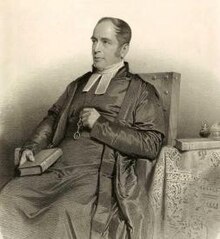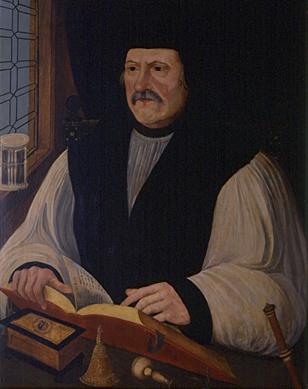
Matthew Parker was an English bishop. He was the Archbishop of Canterbury in the Church of England from 1559 to his death. He was also an influential theologian and arguably the co-founder of a distinctive tradition of Anglican theological thought.
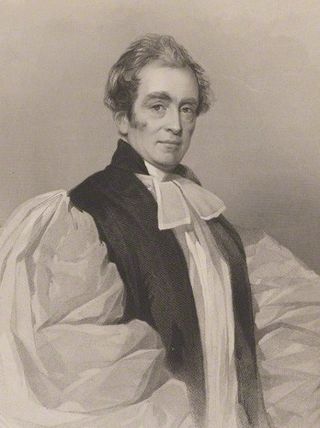
Henry Phillpotts, often called "Henry of Exeter", was the Anglican Bishop of Exeter from 1830 to 1869. One of England's longest serving bishops since the 14th century, Phillpotts was a striking figure of the 19th-century Church.

Edward King was a British Anglican bishop and academic. From 1885 to 1910, he served as Bishop of Lincoln in the Church of England. Before his consecration to the episcopate, he was Principal of Cuddesdon College (1863–1873), an Anglo-Catholic theological college, and then Regius Professor of Pastoral Theology at the University of Oxford (1873–1885).
Sir Thomas Wardlaw Taylor was a Canadian lawyer and judge.

Brampford Speke is a small village in Devon, 4 miles (6 km) to the north of Exeter. The population is 419. It is located on red sandstone cliffs overlooking the river Exe. Its sister village of Upton Pyne lies to its southwest, and Stoke Canon is across the river, to the east. To the south is the hamlet of Cowley with its chapel of ease, which was formerly part of the ecclesiastical parish of Brampford Speke.

John Heyl Vincent was an American bishop of the Methodist Episcopal Church.
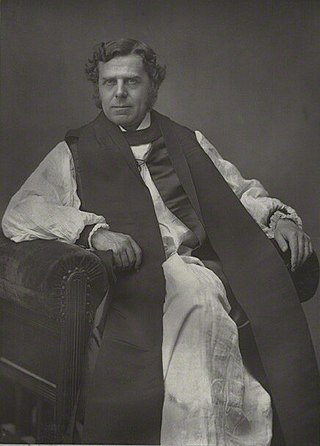
William Boyd Carpenter was an English cleric in the Church of England who became Bishop of Ripon and Royal Chaplain to Queen Victoria.

The Reverend Henry Fanshawe Tozer, FBA was a British writer, teacher, traveller, and geographer. His 1897 History of Ancient Geography was well-regarded.

John Williams was the fourth bishop of the Diocese of Connecticut and eleventh presiding bishop of the Protestant Episcopal Church in the United States of America.
Edward Lowth Badeley was an English ecclesiastical lawyer and member of the Oxford Movement who was involved in some of the most notorious cases of the 19th century.

Archibald Boyd was Dean of Exeter in the Church of England.
William FitzGerald (1814–1883) was an Anglican bishop, first of Cork, Cloyne and Ross and then of Killaloe and Clonfert.

Sir Herbert Jenner-Fust, was an English judge and Dean of the Arches.

Stephen Lushington, generally known as Dr Lushington, was a British judge, Member of Parliament and a radical for the abolition of slavery and capital punishment. He served as Judge of the High Court of Admiralty from 1838 to 1867.
William Scott (1813–1872) was an English clergyman, a leading High Church figure of his time.

Evangelical Anglicanism or Evangelical Episcopalianism is a tradition or church party within Anglicanism that shares affinity with broader evangelicalism. Evangelical Anglicans share with other evangelicals the attributes of "conversionism, activism, biblicism and crucicentrism" identified by historian David Bebbington as central to evangelical identity. The emergence of evangelical churchmanship can be traced back to the First Great Awakening in America and the Evangelical Revival in Britain in the 18th century. In the 20th century, prominent figures have included John Stott and J. I. Packer.

Sir John Speke (c.1442–1518) of Whitelackington, Somerset and of Heywood in the parish of Wembworthy and of Bramford Speke both in Devon, was Sheriff of Devon in 1517 and a Member of Parliament (1477). He was knighted in 1501. His monument is the Speke Chantry in Exeter Cathedral, in which he survives his recumbent effigy.
Isaac Gilling was a Presbyterian minister.
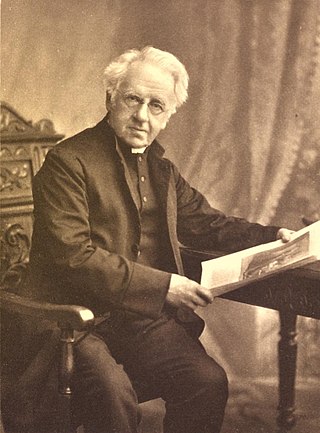
George Rundle Prynne (1818–1903) was a British Anglo-Catholic cleric in south-west England, known for his Tractarian and ritualist views. He is also notable as a hymn-writer: his "Jesu(s), Meek and Gentle" ranked with "Jesus Loves Me" and "Near the Cross" for American Protestants in the later 19th century".

William Maskell (1814–1890) was an English priest of the Church of England, liturgical scholar, and Catholic convert.
